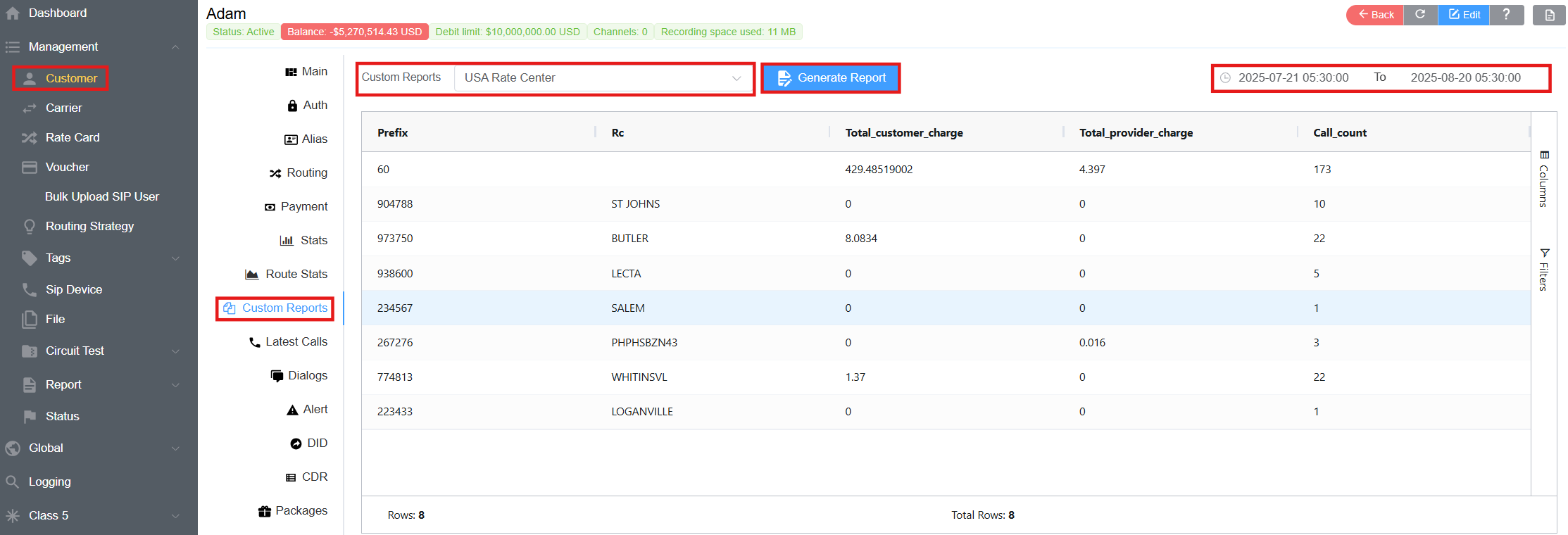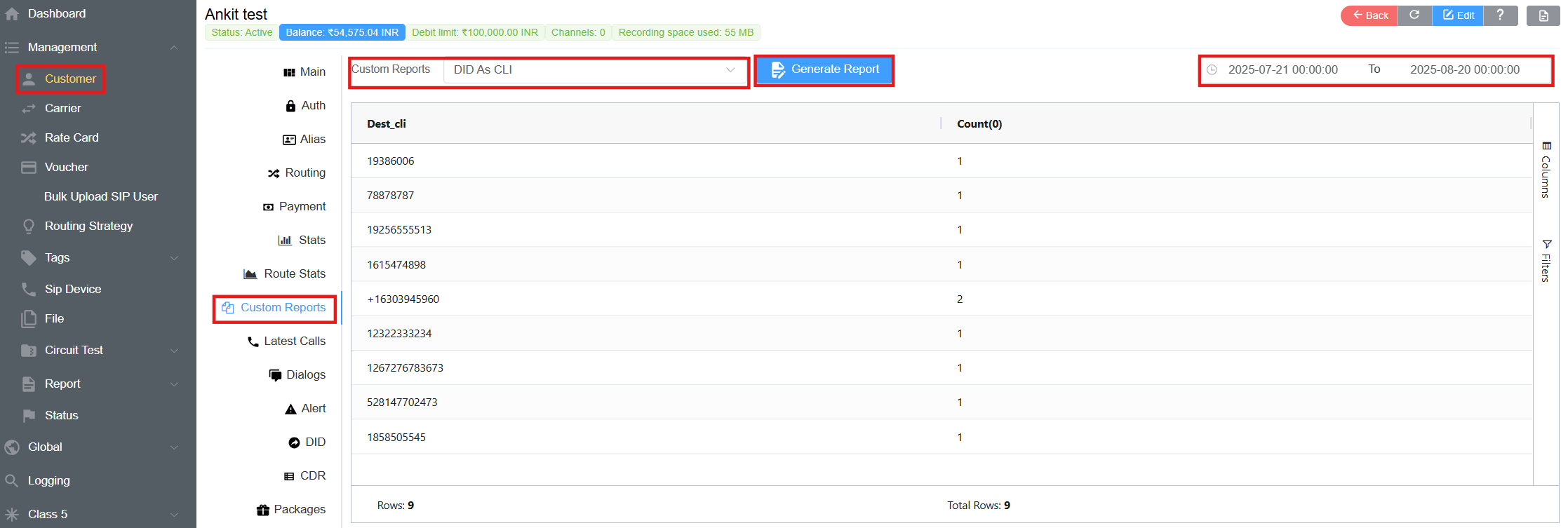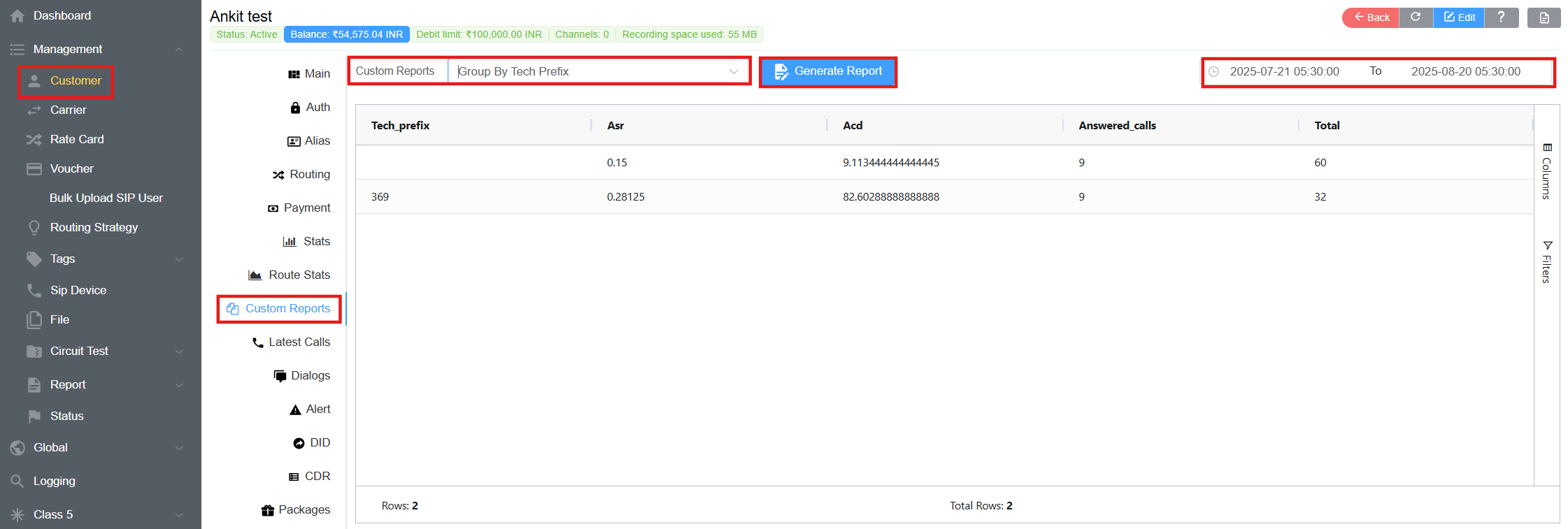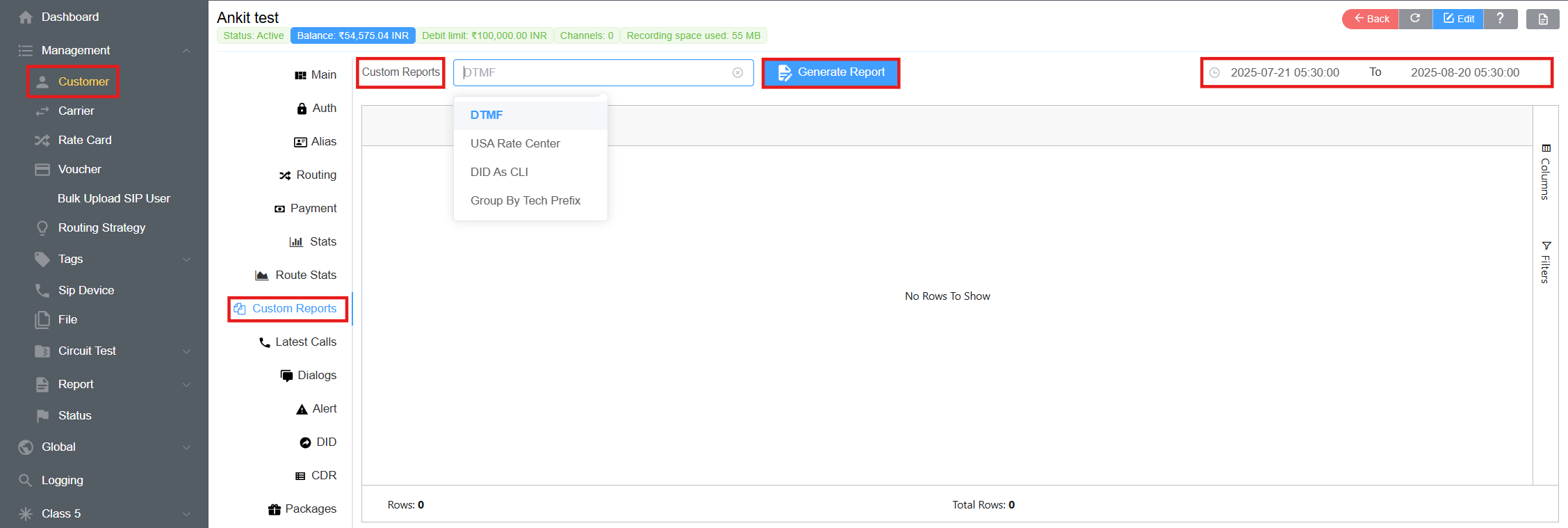Custom Reports¶
Management Customer [Customer Name] Custom Reports
Overview¶
The Custom Reports section provides advanced reporting options for analyzing specific aspects of customer activity and call handling.
These reports go beyond standard CDRs, giving you targeted insights into areas such as DTMF input, Rate Center distribution, and Technical Routing Prefixes.
Types of Report¶
USA Rate Center Report¶
The USA Rate Center Report breaks down call activity based on the originating or terminating rate centers within the United States.
It's especially useful for customers who need visibility into call routing, billing, and usage patterns across different regions.
The report includes the following key fields:
-
Prefix: The dialed number prefix associated with the call.
-
RC (Rate Center): The specific geographic rate center in the U.S. tied to the prefix.
-
Total Customer Charge: The total amount billed to the customer for calls in that rate center.
-
Total Provider Charge: The total cost charged by the upstream provider for those calls.
-
Call Count: The number of calls associated with that rate center.
This report helps compare Customer Charges and Provider Costs at a regional level, ensuring accurate billing and visibility into traffic distribution.

DID As CLI¶
The DID as CLI Report displays all DIDs in the system that have been used as Caller Line Identification (CLI).
The results are automatically grouped by account. This makes it easy to track usage, verify compliance, and analyze account-level activity.
The report includes the following key fields:
-
Dest_cli: It shows the phone number (DID) that has been used as the outgoing caller ID in calls. Essentially, it helps track which DIDs from your system were presented as CLI to the called party.
-
Count(0): It represents the total number of times each DID (shown in
Dest_cli) was used as a CLI within the selected reporting period. It counts the occurrences of calls where that DID appeared as the caller ID.

Group By Tech Prefix¶
The Group by Tech Prefix Report provides a breakdown of call statistics based on routing technical prefixes.
It automatically calculates performance metrics such as:
-
ASR (Answer-Seizure Ratio): The percentage of successfully connected calls.
-
ACD (Average Call Duration): The average length of answered calls.
This eliminates the need to calculate these values manually, saving time and reducing errors.
When to Use?
- Monitor call quality across different routing prefixes.
- Identify underperforming routes or providers.
- Optimize routing strategies for better efficiency and reliability.
The report includes the following fields:
-
Tech_prefix: The technical prefix used to identify a specific routing path or trunk.
-
ASR (Answer-Seizure Ratio) : Percentage of successfully connected calls versus total attempts, measuring call success rate.
-
ACD (Average Call Duration): The average duration of connected calls, used to evaluate call quality and customer engagement.
-
Answered_calls: The total number of calls that were successfully answered.
-
Total: The total number of call attempts made through the prefix (answered + unanswered).

| Report Type | Purpose | Use Case |
|---|---|---|
| USA Rate Center | Groups calls by U.S. rate centers to analyze charges and call volume. | Helps compare customer billing vs. provider costs, identify high-volume rate centers, and margin analysis. |
| DID as CLI Report | Shows calls where DIDs are used as Caller Line Identification (CLI). | Useful for compliance and ensuring proper CLI presentation per regulations or business rules. |
| Group by Tech Prefix | Breaks down call statistics by routing technical prefixes. | Optimizes routing by analyzing quality/performance across prefixes. Helps detect failing routes. |
Steps to Generate Custom Reports¶
- Login to your Control Panel.
- Navigate to Management Customer Customer [Name] Custom Reports.
- Use the report selector to choose the desired report type, then click Generate Report to create it.
- Use the date selector to define the specific date range for which the report should be generated.
